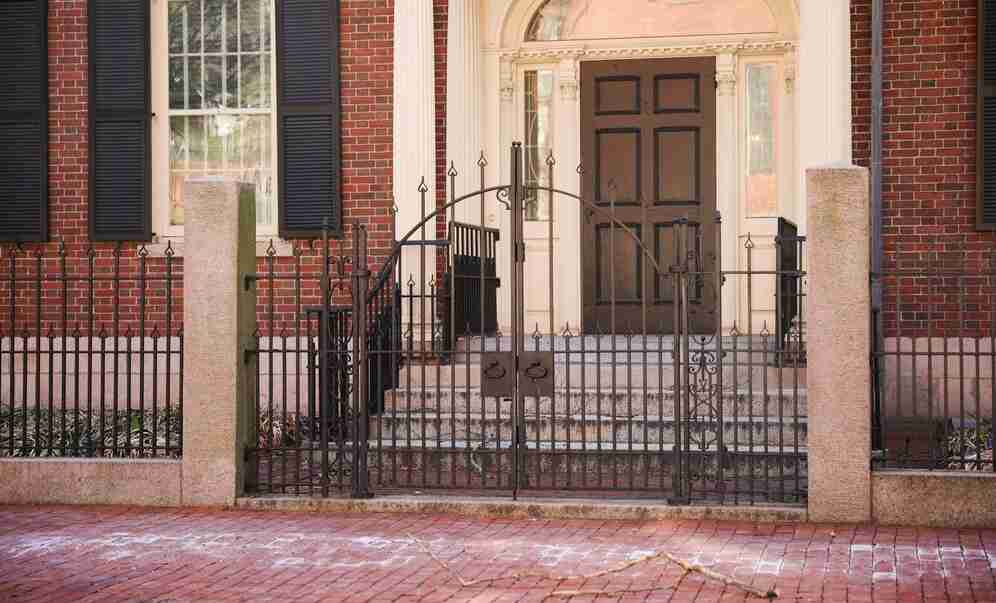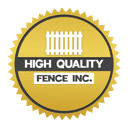
In the ever-evolving landscape of residential living, the quest for privacy remains an enduring priority for homeowners. Whether you seek sanctuary from prying eyes, a peaceful retreat from the outside world, or simply wish to create a secure space for your family, the right fencing solution can be the key to unlocking the ultimate privacy in your home. Welcome to our comprehensive guide, where we delve into the realm of “Residential Fencing Solutions for Ultimate Privacy.”
Privacy isn’t merely a physical barrier; it’s a sense of security and serenity that transforms a house into a true haven. As we embark on this journey, we’ll explore a myriad of fencing options, materials, and designs that cater to diverse needs and preferences. From classic wood fencing that exudes warmth to modern and sleek metal options that provide an aesthetic edge, we’ll navigate the labyrinth of choices to help you make an informed decision.
Understanding that privacy needs vary from one household to another, we’ll guide you through the process of identifying your unique requirements. Considerations such as local regulations, environmental factors, and aesthetic preferences will be addressed, ensuring a holistic approach to crafting a private oasis. So, whether you’re aiming to shield your backyard retreat, establish a safe play area for your children, or simply enhance the overall aesthetic of your property, join us on this exploration of Residential Fencing Solutions for Ultimate Privacy. Your journey to creating the perfect private haven begins here.
Understanding Privacy Needs
Understanding privacy needs is a crucial step in selecting the right residential fencing solution to create a secure and comfortable living environment. The concept of privacy varies from person to person and household to household, making it imperative to conduct a thorough assessment of individual requirements. Factors such as family size, lifestyle, and daily activities contribute to the definition of privacy.
Assessing the local environment and potential privacy threats is equally important. Factors like proximity to busy streets, neighboring houses, or public spaces can impact the level of privacy a residential property enjoys. By understanding these external influences, homeowners can make informed decisions about the height, material, and design of their fencing to mitigate potential privacy concerns effectively.
Aesthetic preferences also play a role in privacy needs. Balancing functionality with the overall look of the property is essential for creating a harmonious living space. Additionally, being mindful of neighborhood regulations ensures that the chosen fencing solution complies with local guidelines, avoiding any legal complications.
Ultimately, the understanding of privacy needs sets the foundation for choosing the most suitable fencing option. Whether it’s a desire for complete seclusion, a balance between visibility and security, or an emphasis on aesthetic appeal, tailoring the fencing solution to meet specific privacy requirements enhances the overall satisfaction and comfort of the residents.
Popular Fencing Materials
- Wood Fencing:
- Natural Appearance: Wood fencing provides a classic, natural look that complements various architectural styles.
- Customization: Homeowners can choose from different types of wood, such as cedar or redwood, and customize the design to suit their preferences.
- Maintenance: Regular maintenance, such as staining or sealing, is necessary to prevent weathering and ensure longevity.
- Vinyl Fencing:
- Durability: Vinyl fencing is known for its durability and resistance to elements like rot, decay, and pests.
- Low Maintenance: Requires minimal maintenance, typically only needing occasional cleaning with soap and water.
- Aesthetic Options: Comes in various colors and styles, offering versatility in design.
- Metal Fencing:
- Security Features: Metal fences, especially wrought iron or steel, provide robust security and durability.
- Ornamental Designs: Ornate and decorative metal fencing options add an elegant touch to the property.
- Long Lifespan: With proper maintenance to prevent rust, metal fences can have a long lifespan.
- Composite Fencing:
- Combination of Materials: Composite fences are made from a mix of recycled wood fibers and plastic, offering the benefits of both materials.
- Low Maintenance: Resistant to rot, insects, and warping, requiring minimal upkeep.
- Eco-friendly: Environmentally friendly option due to the use of recycled materials.
These popular fencing materials cater to different preferences, budgets, and maintenance capabilities, allowing homeowners to choose the option that best aligns with their needs for privacy and aesthetic appeal.
Innovative Privacy Solutions
Innovative privacy solutions go beyond traditional fencing options, offering creative and technologically advanced ways to enhance privacy in residential settings. These solutions address not only visual privacy but also considerations like noise reduction and convenience. Here are two innovative privacy solutions:
Soundproof Fencing:
- As urban environments grow, so does the need for noise mitigation in residential areas. Soundproof fencing is designed to reduce external noises, providing a quieter and more peaceful living environment. These fences typically incorporate specialized materials and construction techniques that absorb or block sound waves. Homeowners can enjoy increased privacy by minimizing the intrusion of street noise, neighbors, or other environmental sounds. Soundproof fencing is particularly beneficial for homes located in busy urban or suburban areas, contributing to a more serene and comfortable atmosphere.
Horizontal Slats and Louvers:
- Modern design trends have given rise to fencing solutions that not only ensure privacy but also add a contemporary aesthetic to outdoor spaces. Horizontal slats and louvers provide an innovative twist to conventional vertical fencing. By arranging the fence elements horizontally, this design creates a sleek and modern look while maintaining a high level of privacy. Homeowners can choose the spacing between slats to control the level of visibility, allowing for customization based on individual preferences. Additionally, the horizontal orientation can complement the architecture of modern homes, adding an element of style to the overall outdoor design.
These innovative privacy solutions showcase the evolving landscape of residential fencing, providing homeowners with options that cater to specific needs while embracing advancements in materials and design.

Gate And Entryway Options
A. Securing Privacy While Maintaining Accessibility:
- 1. Single Swing Gates: Ideal for smaller spaces, these gates swing open in one direction, providing a classic and straightforward entryway option.
- 2. Double Swing Gates: Offering a wider entry point, double swing gates are suitable for larger driveways, ensuring convenience without compromising security.
B. Automated Gate Systems for Convenience:
- 1. Slide Gates: These gates move horizontally, sliding to the side to open. They are suitable for properties with limited space and are often preferred for sloped driveways.
- 2. Swing Gates with Automated Openers: Adding automation to swing gates, this option allows residents to open and close gates with the touch of a button, providing enhanced convenience and security.
- 3. Rolling Gates: Comprising a rolling mechanism, these gates are effective for larger commercial or residential entrances, providing durability and ease of use.
C. Matching Gate Designs with the Overall Fencing Aesthetic:
- 1. Custom Designs: Creating a cohesive look by matching the gate design with the overall fencing style, whether it’s ornamental, modern, or traditional.
- 2. Material Consistency: Ensuring the gate material aligns with the chosen fencing material, maintaining a unified and aesthetically pleasing appearance.
- 3. Landscaping Integration: Incorporating landscaping elements around the gate area for a seamless transition between the outdoor space and the entryway, enhancing the property’s curb appeal.
Selecting the right gate and entryway options is pivotal in creating a welcoming yet secure entrance, harmonizing with the chosen fencing solution and fulfilling the dual purpose of enhancing privacy and providing convenient access to the property.
Maintenance Tips For Longevity
Maintaining your residential fencing is crucial for ensuring its longevity and preserving its functionality and appearance over time. Proper care can also help prevent costly repairs or premature replacements. Here are some maintenance tips for different fencing materials:
- Wood Fencing:
- Regularly inspect for signs of rot, insect infestation, or water damage.
- Clean the fence with a mild detergent and water to remove dirt and mildew.
- Apply a protective sealant or stain every 2-3 years to protect against the elements.
- Trim nearby vegetation to prevent it from touching or leaning on the fence.
- Vinyl Fencing:
- Clean with a mixture of mild soap and water to remove dirt and stains.
- Inspect for any cracks, warping, or discoloration.
- Avoid using abrasive materials or harsh chemicals for cleaning.
- Secure loose components and replace damaged sections promptly.
- Metal Fencing:
- Check for rust or corrosion and address it promptly with appropriate treatments.
- Clean with a mixture of mild detergent and water to remove dirt and grime.
- Apply a rust-resistant coating or paint as needed.
- Lubricate hinges and moving parts to prevent stiffness or squeaking.
- Composite Fencing:
- Clean with a gentle detergent and water to remove debris and stains.
- Inspect for any signs of wear, warping, or damage.
- Avoid using abrasive cleaning tools that may scratch the surface.
- Apply a protective coating or sealant if recommended by the manufacturer.
- General Maintenance Tips:
- Regularly inspect the entire fence for loose or damaged components.
- Tighten screws, bolts, or nails as needed.
- Trim vegetation around the fence to prevent overgrowth and damage.
- Check gates for proper alignment and functioning.
Remember, the frequency of maintenance tasks may vary based on factors such as climate, local conditions, and the specific material of your fence. Following these guidelines can help extend the life of your residential fencing, keeping it not only aesthetically pleasing but also functional and secure for years to come.
In conclusion, choosing the right residential fencing solution for ultimate privacy involves a thoughtful consideration of various factors, including individual privacy needs, environmental influences, and aesthetic preferences. From classic wood fencing to modern composite options, understanding the materials and designs available can significantly impact the overall effectiveness of your privacy solution. Gate and entryway considerations, innovative privacy features, and proper maintenance further contribute to the long-term success of your fencing investment. Whether opting for professional installation or embracing a DIY approach, prioritizing quality and adherence to local regulations ensures a secure, visually pleasing, and enduring privacy haven. By implementing these insights, homeowners can confidently create a sanctuary that not only meets but exceeds their expectations for privacy and comfort.


